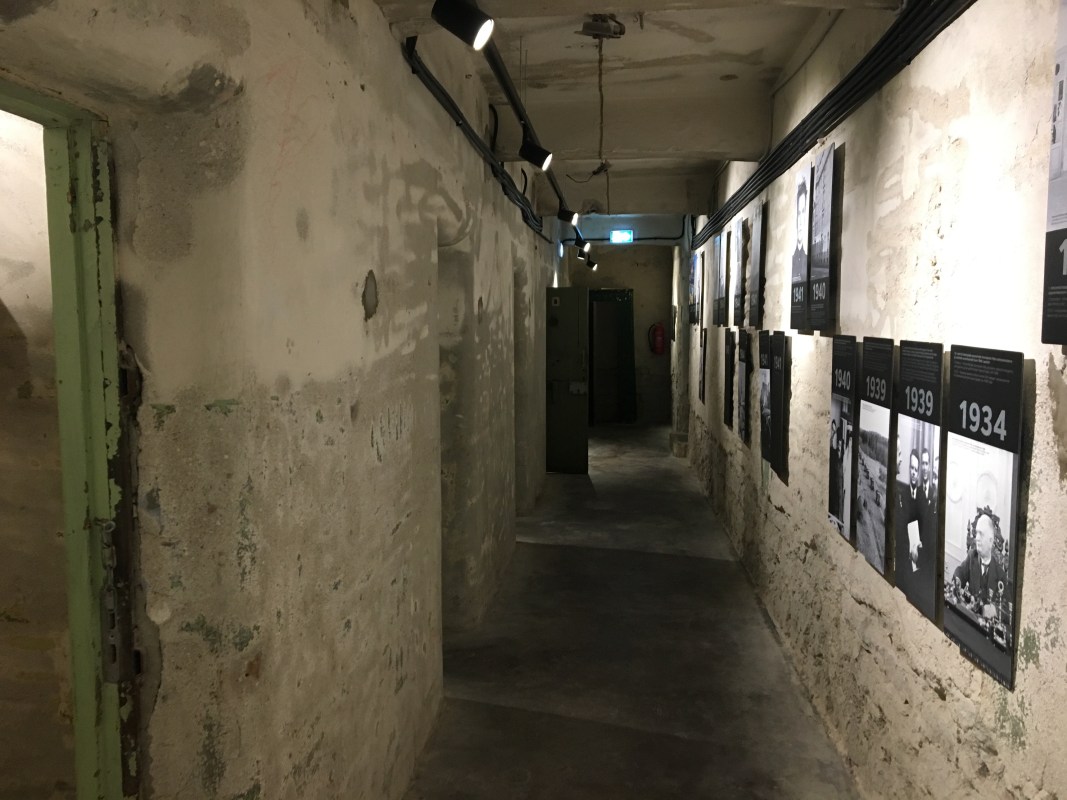Nestled on a charming, otherwise unremarkable cobblestone lane in an eastern European capital is a door to some of the darkest days of Soviet occupation — the years when the city played host to an underground KGB prison and interrogation center, or as it’s known today, a “house of horrors.”
Taking a few steps down into the prison in Tallin, Estonia, a visitor today turns left to see a narrow concrete hallway. The few cells housed here are through cramped doorways to the left — four in the first section. The cells themselves are simple concrete rectangles, pockmarked with peeling paint. The barred windows could threaten to allow some light in from the street above, but they too were covered over long ago — purportedly to mute any sounds of agony.
“Over four months in wet cellar cells where there was no air for breathing, with interrogation at nighttime and no sleep permitted at daytime,” said a man named Daniel Mango who was in the prison in 1946 at the invitation of Soviet intelligence, according to placards since placed around the old prison. Mango said he was moved to another institution, but then brought back when the interrogations were more aggressive.
“They used physical beating (beating, interrogation in two shifts, at night and during the day) as well as psychological influencing techniques,” he said. “For example, once I was taken to the same bathroom at Pagari street [where the prison is housed] where prisoners were shot in 1941, and they imitated shooting to weaken me for interrogation.”
Cell door at the former KGB prison in Tallin, Estonia. (Lee Ferran)The detention center, which has since been turned into an unusually dark museum that opened earlier this year, is situated on Tallin’s quiet Pagari Street literally across from what’s now the Ministry of the Interior. The site of the prison, Pagari 1, was first used as an interrogation center in late 1940 when local Soviet intelligence, known then as the NKVD, moved in. It was alternatively used as a prison or as offices by Soviet intelligence before and after the Second World War, and then it became the domain of the KGB.
The Estonian government says its citizens were interrogated at Pagari before being sentenced usually to death or Siberian prison camps.
Back inside the prison, walking past the cells to the end of the corridor, a visitor would come upon a curious wooden closet that seems too narrow to be of use except for maybe storing firearms. But it wasn’t for firearms, it was for people.
The idea was to lock prisoners in what was called the “cupboard” for extended periods. The cupboard was not more than seven feet tall by two and a half foot wide by maybe a feet deep — barely enough room to stand, and not nearly enough room to do anything else.
“In this closet, the person soon began to suffer from a shortage of air,” a museum placard said. “Often, an entire row of people sat in those cupboards set side-by-side, barely able to hear each other through the thin wall.”
Cupboard at the former KGB prison in Tallin, Estonia. (Lee Ferran)Facing the cupboard at the end of the corridor, a visitor can turn right to walk up a couple of steps and into another corridor running parallel to the first. Pipes run along the ceiling and there is a large, heavy metal door just a few paces down the corridor. This one is locked, but another door on the left is not. That one is the door to the solitary confinement room.
It’s hard to describe the size of this room because a huge circular wall intrudes on what would be a small rectangle, cutting out a majority of the area of the room. There’s hardly room for a bench and there would be no lying down for a man close to six feet tall.
The interrogations at Pagari continued until 1950 and the space was turned into archive rooms in 1959. (An interesting aside: A man apparently being vetted by the CIA as a potential double agent claimed to have been housed in the “NKVD house” in Pagari in 1950 — the CIA was very skeptical of his story.)
Estonia was occupied by the USSR until the Soviet collapse in 1991.
“The prison cells at Pagari Street stand as silent and intimate witnesses, telling the stories of atrocious violations of human rights and the crimes of inhumane regimes,” according to the Kistler-Ritso Estonian Foundation, an organization dedicated to documenting the Soviet occupation of Estonia.
This article was featured in the InsideHook newsletter. Sign up now.
























